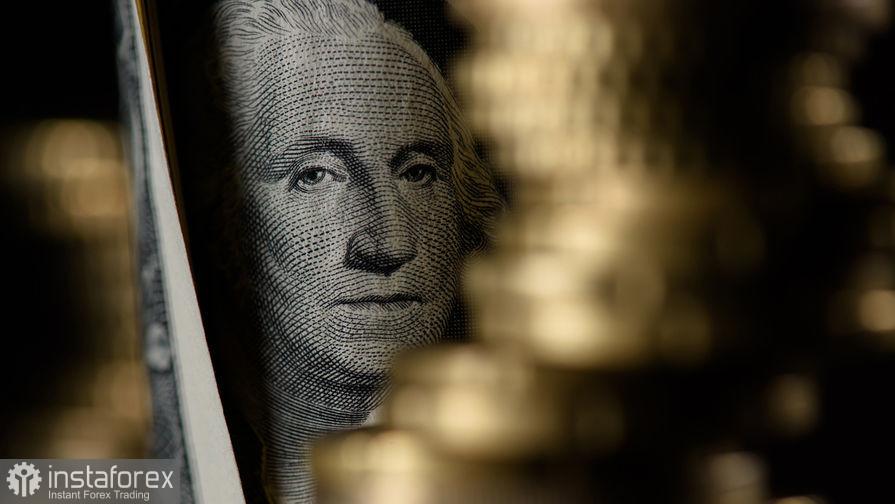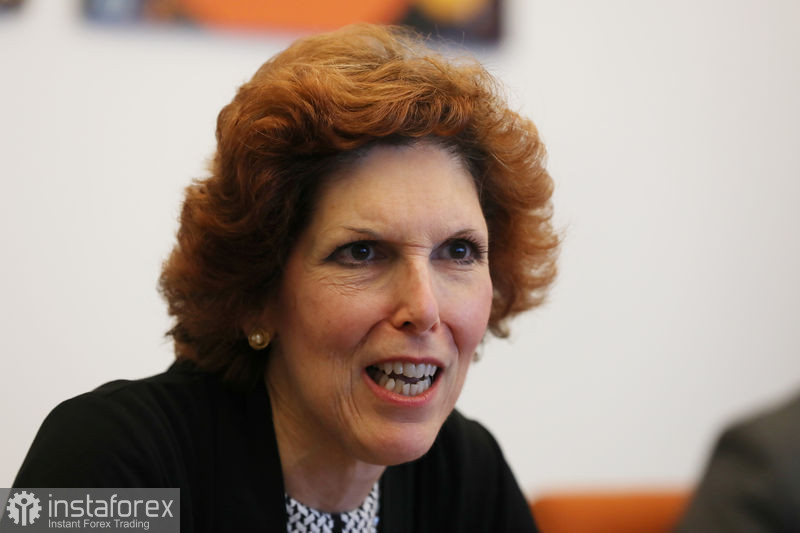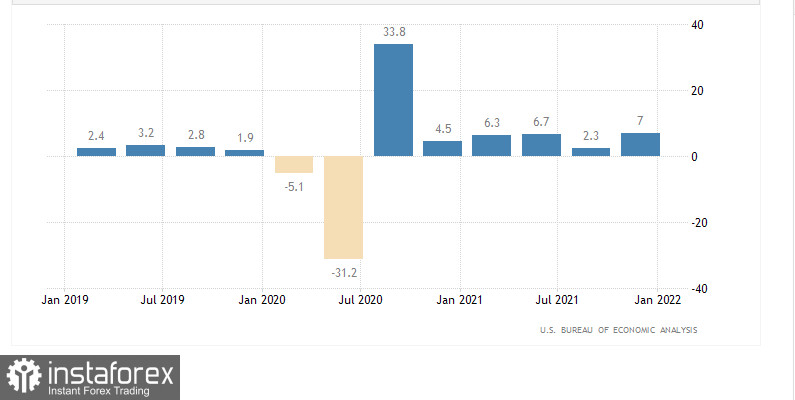Yesterday, there were quite a few speeches by representatives of the Federal Reserve System, who unanimously pointed out the need to raise interest rates to combat inflationary pressures, even despite what is happening in Ukraine, which could derail the Fed's plans to tighten monetary policy. From yesterday's speech, it is clear that Federal Reserve officials have remained true to their determination to raise interest rates next month despite the uncertainty caused by Russia's invasion of Ukraine. Recognizing the risks posed by the conflict, which triggered one of the worst security crises in Europe since World War II and sent oil prices skyrocketing, U.S. central bankers stressed the need to counter the highest U.S. inflation in 40 years.

"With the economy at full employment and inflation far above target, we should signal that we are moving back to neutral at a fast pace," Gov. Christopher Waller said Thursday at an event at UC Santa Barbara. "A 50 basis point hike would help do that."
Most likely, more aggressive actions by the Fed will directly depend on the data on the labor market and inflation, which will be at the disposal of the leadership of the central bank for February this year before the start of the committee meeting in March. It is worth noting that even before the Russian invasion, Fed officials vigorously signaled their willingness to raise interest rates at the March 15-16 meeting to fight inflation, while keeping options open as to how far or how fast they would move once monetary tightening began. Now, when there is another jump in energy prices, almost no one doubts this kind of action on the part of the Federal Reserve System.
Waller also advocates raising rates by 100 basis points by mid-year and starting to cut the Fed's balance sheet in time for the July central bank meeting. However, after yesterday's speech, it is clear that these plans may be hindered by a Russian attack on Ukraine, which will clearly affect the U.S. economy. There are still a few weeks before the Fed's March meeting, and no one knows how the situation will develop. However, almost all traders and economists still believe that the Fed will start raising rates in March, but at what pace the tightening of monetary policy will continue is an open question. Interest rate futures show a quarter point increase next month.
Cleveland Fed President Loretta Mester said Thursday that "The implications of the unfolding situation in Ukraine for the medium-run economic outlook in the U.S. will also be a consideration in determining the appropriate pace at which to remove accommodation."
"Geopolitical events add upside risk to the inflation forecast even as they put some downside risk to the near-term growth forecast," Mester said.

As I noted above, skyrocketing energy prices could drive headline inflation even higher, although higher energy prices hitting American pockets (due to rising gasoline prices, for example) could dampen demand, dampening inflationary pressure.
Atlanta Fed President Raphael Bostic said on Thursday that he currently still expects a rate hike in March, provided the economy develops as he expects. "If the numbers come in close to that I think that can we continue with our liftoff plan," he said during the Atlanta Fed's banking outlook conference. "We'll just have to see where things go. I know we have seen over the past several weeks that oil prices have increased dramatically, as have natural gas. That could have ripples."
Richmond Fed President Thomas Barkin also made a speech Thursday. He noted that time will tell if Ukraine will change its views on politics, while confirming its intention to start normalizing policies to counter price pressure. Barkin said U.S. ties to the Russian economy and the influence of U.S. banks on the country appeared to be limited. He also noted that when Russia annexed Crimea in 2014, the impact on the American economy was limited. "If things play out like they did in 2014, I don't think you're going to see big changes in the Fed's basic approach."
Data came out yesterday showing U.S. jobless claims fell more than expected last week. Initial jobless claims fell by 17,000 to 232,000 in the week ended Feb. 19, data from the U.S. Department of Labor showed. Economists had expected the number of applications at 235,000. The observed decline in the number of applications is consistent with the labor market, which has returned to its previous course after the problems caused by the coronavirus pandemic and its latest strain, omicron. Demand for U.S. labor continues to far outstrip supply, and more Americans are expected to return to work after all government support measures and programs are completed.

Also yesterday, U.S. GDP data for the 4th quarter of 2021 was released. They had no impact on the market, even though the government slightly revised its estimate of fourth-quarter growth upwards. The economy grew by 7% YoY, reflecting a significant increase in inventories. Consumer spending rose 3.1%, lower than previously reported.
Today, U.S. income and spending data are expected to shed even more light on future inflationary pressures in the country. However, market volatility will continue to depend on Russia's actions on the territory of Ukraine and on the military conflict, which is now under the close attention of the world community.
As for the technical picture of the EURUSD pair
The bulls defended the support around 1.1108, which returned the demand for risky assets. However, the growth of geopolitical tensions around Russia and Ukraine will contribute to a further decrease in the trading instrument, so I do not recommend relying heavily on its recovery. Euro buyers need to fix above 1.1220, which will allow continuing the correction to the highs: 1.1260 and 1.1300. The decrease in the trading instrument will be met with active purchases in the area of 1.1160. However, the key support level remains the area of 1.1110, for which a serious struggle may also flare up - if EURUSD returns to this range.
As for the technical picture of the GBPUSD pair
Pound buyers have shown themselves after yesterday's major fall of the pair, and are now focused on the resistance of 1.1415. Returning this range under control will allow counting on a more powerful correction of the pair to the area of 1.3465 and 1.3510. However, growth prospects are overshadowed by Russia's military actions in Ukraine. If we go below 1.3360, then the pressure on the trading instrument will increase. In this case, we can expect a second fall to the area of 1.3310 and 1.3270.
 English
English 
 Русский
Русский Bahasa Indonesia
Bahasa Indonesia Bahasa Malay
Bahasa Malay ไทย
ไทย Español
Español Deutsch
Deutsch Български
Български Français
Français Tiếng Việt
Tiếng Việt 中文
中文 বাংলা
বাংলা हिन्दी
हिन्दी Čeština
Čeština Українська
Українська Română
Română

